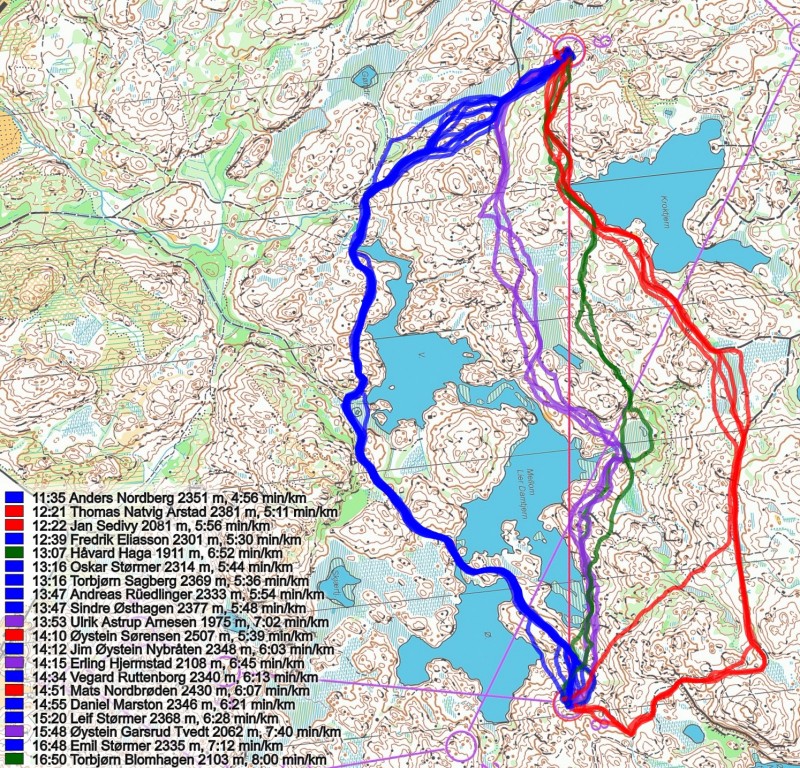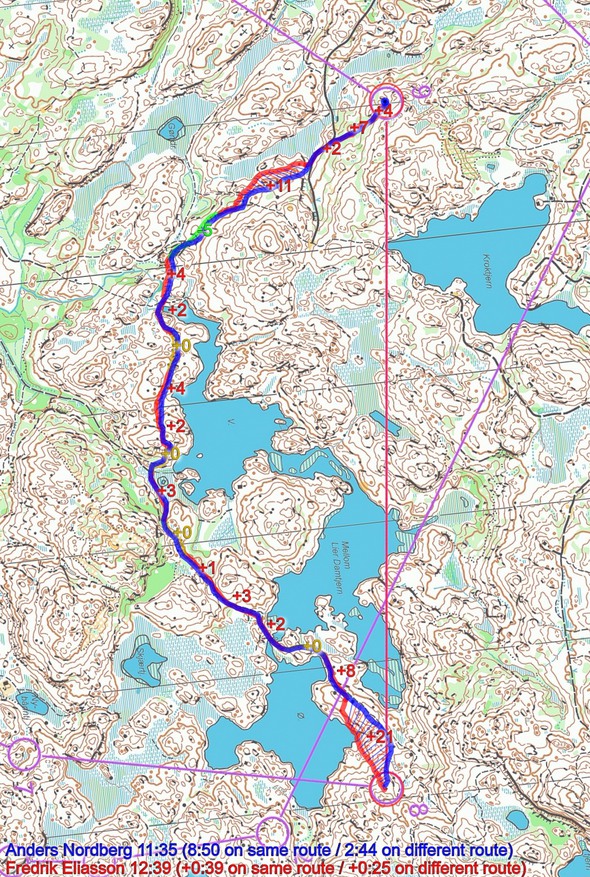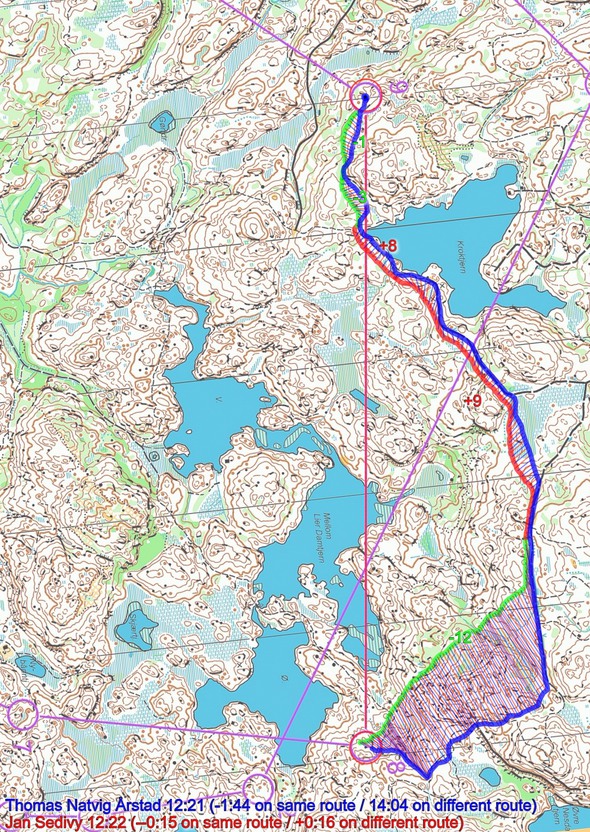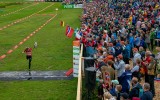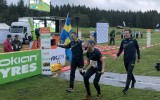In the third edition of WOC2019's GPS Analysis Column World of O's Jan Kocbach takes a look at the GPS-tracking from Småleneløpet - a long distance race organized in April 2017 in very WOC relevant terrain north of Mysen. Again a must read for those interested in WOC 2019 terrain. This article is co-posted on World of O as Day 12 in World of O's "Route to Christmas".
In the two first editions we took a look at Euromeeting Long distance and the Norwegian Championships Long. The main takeaway-points here was that on Euromeeting you did not lose much time when keeping close to the line, the fastest route never being more than 75 meter away from the direct line except for a single leg. At the Norwegian Championships Long, we found that if you are Olav Lundanes, you can mostly get away with fighting straight as a bulldozer through the tough Østfold terrain. However, if you are somebody else, you can earn some time by going around the toughest parts and using your speed.
In Småleneløpet, the course setter decided to introduce some elements which makes it impossible to go straight - there are several big lakes in the terrain which several of the legs cross straight on - thus the runners need to choose either to go left or right. In addition, quite steep borders along some of the shores of the lakes gives some extra challenges with respect to routechoice.
You find the complete Men 21 Elite course with GPS-tracking either in Loggator or in Livelox. The 9th leg in the Men 21 Elite course is chosen for the analysis in this article, as this is the most interesting leg in the course. First you can study the leg without any routes and decide which route you would have taken. You may also head over to World of O and draw your route in the Route to Christmas webroute if you want to test yourself.
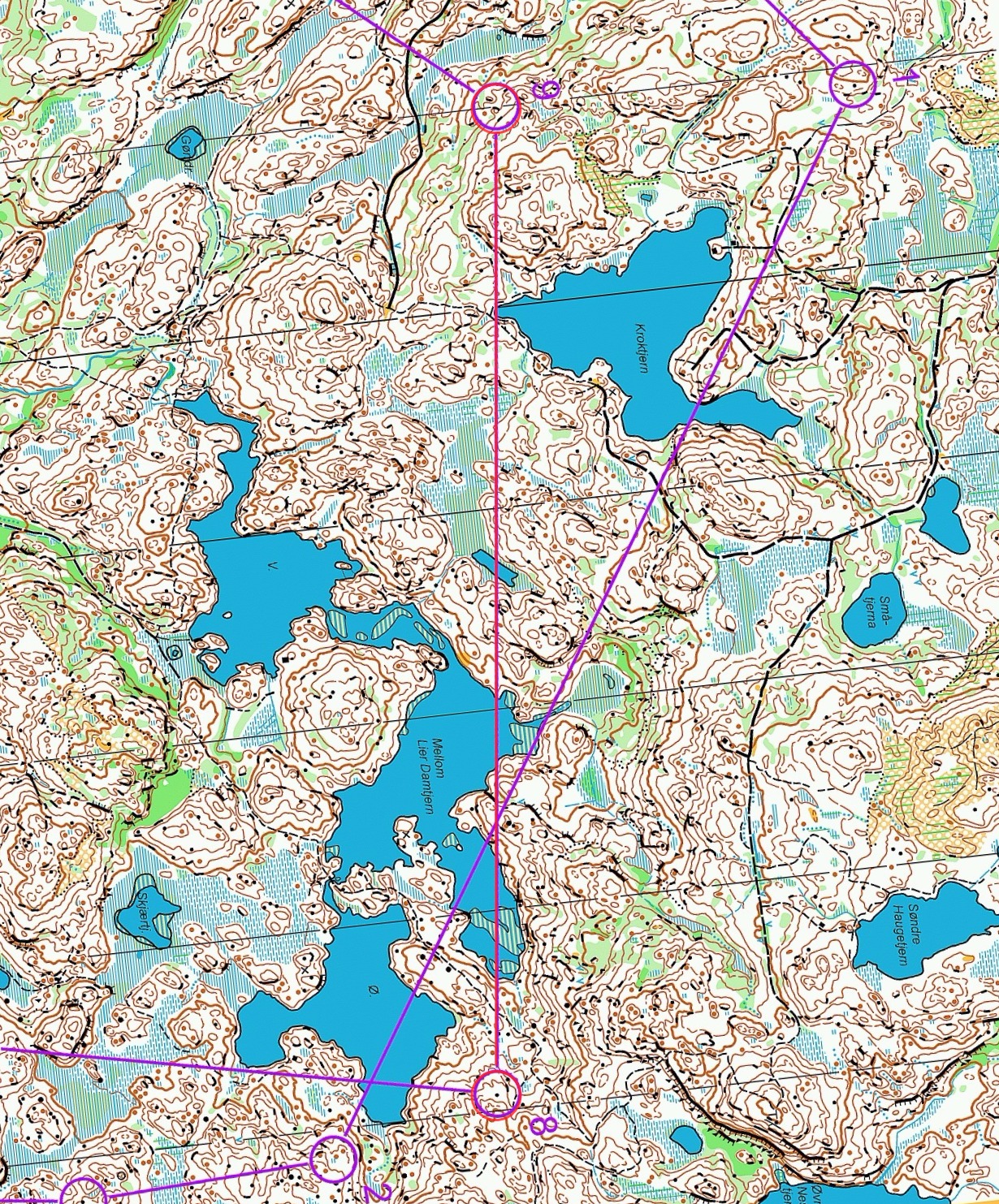
Below you can see how the runners solved the leg. There are four main routechoices here – left (blue), right (red), direct left (violet) and direct right (green).
An analysis of the main options:
- Blue route: Nordberg wins the leg by a clear margin by taking the blue route – mostly running on a small path with very little climb. A majority of the runners take this route – it is mostly quite easy to execute, and once you have decided on the left route, there are not many further choices to be made until the very end of the leg.
- Red route: Also a lot of path running, but you need to take some extra climb. If you take the path all around (backwards out of the control), this route has approximately the same length as the blue route. If you cut across like Jan Sedivy does, you save around 300 meters running. Compared to the blue route, the red route probably loses you some 30-50 seconds – taking Sedivy’s cut is 10-15 seconds faster than all around. Thomas Natvig Årstad is second on this leg, and in his own analysis he writes that he was very uncertain when choosing the route here and didn’t see the route to the left. Neither did he notice that cutting along Sedivy’s route would be better on the red route.
- Green/violet route: It is quite tough to go straight in this terrain when you have to pass many small hills, especially along the lakes. With the green route you get quite good runnability with little climb the last half of the leg, and don’t lose too much time. It would probably have been possible to push this time down towards the red route or even below with perfect execution by a top runner. Actually, Haga who runs straight looses less than 10 seconds to Sedivy from the control until they are together again. You need to be very skilled in this terrain to execute this route well, though.
Then you can look at the traditional color-plot – showing leg time by color from green (fast) to slow (red):
Comparing left (Nordberg) with right (Årstad) shows that what is really slow is to get up to the main path, the rest of the route is quite fast.
The comparison below of the two fastest on the left route shows how Eliasson loses 20 seconds the first 2-300 meters out of the control by not choosing the path. This shows how important execution is in this terrain.
Comparison of Sedivy versus Natvig Årstad (the cut to the right):
And finally a look at Haga’s direct route – not bad that cut direct!
The conclusion this time: Again, Lundanes would probably have gotten away with the straight choice (Haga's choice) without losing too much time - but probably left is the faster choice for most runners here. Especially due to how tricky it may be to execute the leg well.
